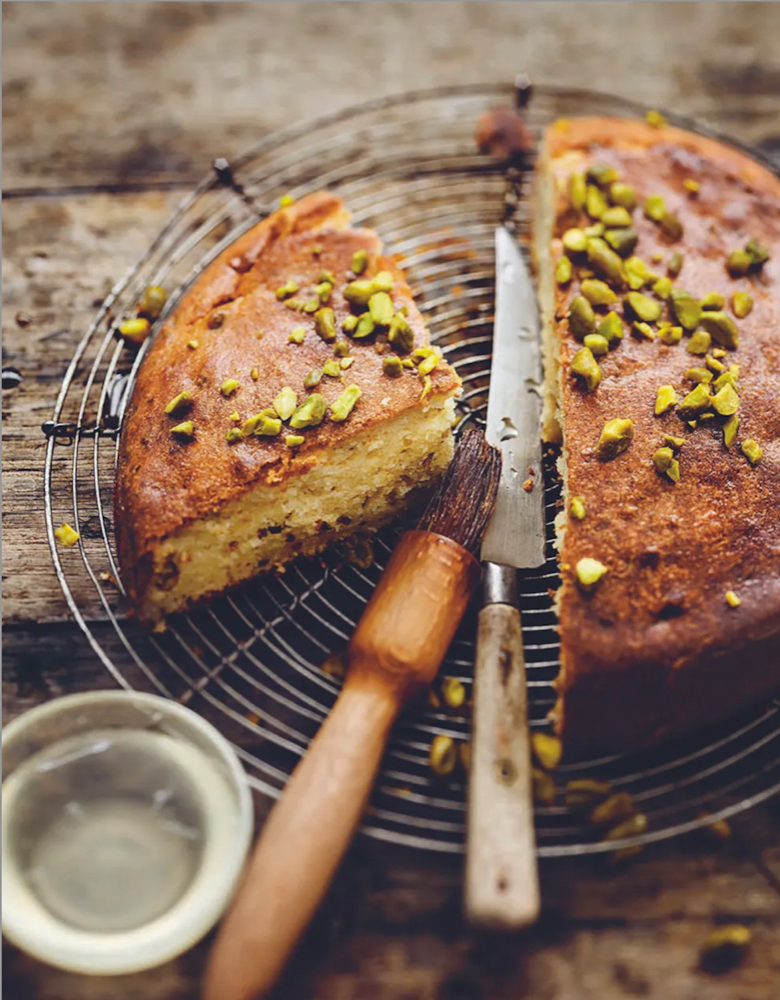Trish Deseine hosts a persian party…
After wind, rain and SNOW, spring cannot come fast enough this year. Our very welcome days off work over the Saint Patrick’s weekend mean we can finally take the time to celebrate and entertain. Keep in mind that Monday March 20 is the spring equinox, the day when darkness and light are in balance, tipping from then on in favour of the sun and brings a promise of renewal and growth. Therefore, this weekend can be a time to celebrate the awakening of Ostara, or Eostre, the Teutonic goddess of fertility and new life.
For this Irish ex-pat zealot, traditional (clichéed?) St Patrick’s Day recipes – even those with more twists than The Sixth Sense, Gone Girl and Atonement put together – are just not going to make the cut in 2023. And even if I fall short of performing a pagan ritual or two, or making magic herbal potions with forget-me-not, calendula, alder and gorse, or any of the numerous herbs associated with Ostara, I’m determined to mark this hopeful celebration of spring by cooking in a more symbolic way. I’ll leave Ostara to her rabbits and hares this time, however, and instead concentrate on cooking with lots of eggs, herbs, spring vegetables, milk and honey.
In Iran, and throughout Central Asia, the beginning of the New Year falls on the first day of spring and is marked by the ancient Persian festival of Nowruz – Persian for “new day”. Originally religious, now mostly secular, steeped in symbolism and rich traditions, the celebrations date back more than two and half thousand years to the time of ancient Persian kings, and last for 13 days.
The “Haft Sin”, an elaborate table setting, is the centrepiece of Nowruz traditions at home. Seven foods, all starting with the letter S, are set out in attractive bowls and dishes. They include wheat, lentil or barley shoots symbolising rebirth, dried oleaster berries for love, garlic for health, apples for love and health, vinegar for patience, sumac for tolerance and a wheat pudding called samanu for abundance. The table also includes other symbolic items such as coins for prosperity, a mirror for light and life reflection, hyacinths for spring itself and, surely the ultimate tablescape feature, goldfish swimming in a bowl, representing life itself.
As for the feasting, Persian cuisine will give you vast inspiration to change up your March holiday cooking. Make sure you have plenty of saffron, sumac, cinnamon, barberries (easy to find online) fresh herbs and pomegranate seeds and dive in.
The most popular Nowruz dishes are easy to make and serve at home. Sabzi polo ba mahi is fried fish with rice coloured vivid green with herbs, Reshteh polo, rice and toasted noodles with saffron-infused onions and raisins and Nowruz mainstay, Kuku Sabzi, a bright green herb frittata you will want to keep in your repertoire forever.
A wonderful source for Persian cooking is the renowned Iranian cook and writer, Atoosa Sepehr. After a dramatic escape from Iran to London in 2007, Atoosa began cooking for her new friends and neighbours, and realised it gave her a way of both feeling connected to the family she had left behind and of forging a new life. Atoosa now lives between London and Dublin with her Irish partner and her beautiful book, From a Persian Kitchen, was an Irish Times cookbook of the year in 2018. You can join her many followers on Instagram for regular colourful snippets from her life and kitchen, and discover her gorgeous recipes on her website www.atoosasepehr.com @trishdeseineencore

RESHTEH POLO WITH SAFFRON ONIONS AND RAISINS
This is a version of one of Persian chef and teacher Hami Sharafi’s recipes on his terrfic blog «?I Got it from my Maman?». I hope he won’t mind my using pasta instead of traditional Iranian Reshteh toasted noodles, which sadly I did not have to hand! You can order them (as I now have) online from foratasteofpersia.co.uk.
10 minutes preparation
Ingredients
45 minutes cooking
400g basmati rice
100g reshteh noodles? (I used wholewheat linguine but you could also substitute japanese or other buckwheat or wholewheat noodles)
3 onions peeled and finely sliced
6 tbsp raisins
6 tbsp vegetable oil
2 tbsp butter
2 tsp ground cinnamon powder
1/4 tsp saffron, ground
2 tbsp salt
Method
Bloom the saffron either by sprinkling it over a couple of ice cubes, letting them melt and stirring the saffron into the water, or by pouring boiling water over and stirring.
Wash and rinse the rice two or three times, draining each time. Leave the rice to soak in cold water as you bring another large pot of salted water to the boil. Parboil the rice following the cooking instructions on the packet. Usually around 6 or 7 minutes. You want it to be soft on the outside but still firm inside. 2 or 3 minutes before the rice has finished parboiling, break the noodles or pasta into small pieces 2 or 3 cm and cook them in the boiling rice. Drain the rice and noodles and rinse in cold water to stop them cooking further.
Heat the oil and butter in a saucepan over medium heat. Add a layer of rice, season with salt and sprinkle over some cinnamon. Repeat again or twice according to the size of your pan. Then poke a few holes in the rice and put the pan on to a low heat. When you see steam rising, cover with the lid of the pan wrapped in a tea towel to seal. Steam for 45 minutes.
Heat some oil and butter in a pan and fry the onions over medium heat until they begin to brown lightly. Pour in the saffron water and leave to simmer and cook gently. Add the raisins and season with salt. Keep warm until you are ready to serve the dish.
Turn out the rice and noodles, season and stir, and then remove the golden crust or ‘tahdig’ which will have formed at the bottom of the pot.
Serve separately or in pieces over the rice and noodles, with the onions and raisins and some fresh herbs if you like.

HONEY, YOGHURT AND ALMOND LIME DRIZZLE CAKE WITH PISTACHIOS
A nod to some symbolic spring ingredients and a lovely cake to keep and cut over the holiday weekend.
For 8
10 minutes preparation
50 minutes cooking
Ingredients
225g?plain flour
1?tsp baking powder
100g?caster sugar
75g? ground almonds
2?eggs
1?tbsp honey
250ml?plain yoghurt
150ml?sunflower oil
Grated zest of?1?lime
100g?pistachios, chopped
For the syrup:
100g?caster sugar
Juice of?1?lime?(or?2?limes?if not very juicy)
Method
Preheat the oven to?180°C (350°F/Gas 4). Butter and flour a?20?cm?(8?inch) round cake tin. Sift the flour and baking powder into a mixing bowl, then add the sugar and almonds.
In another mixing bowl whisk the eggs with the honey, yoghurt, oil and lime zest. Pour this batter into the bowl containing the dry ingredients and beat for about 1 minute, until the mixture is uniform.
Add the pistachios to the batter (reserve some for decoration) and mix well. Then pour the batter into the cake tin. Bake?for about?50 minutes.
Meanwhile, make the syrup. Combine the sugar and?150?ml(of water in a saucepan, then bring them to the boil and simmer until the syrup reduces by half. Let the mixture cool before adding the lime juice.
Check whether the cake is cooked by inserting the blade of a knife into the middle. If the blade comes out clean, it’s ready.
Take the cake out of the oven and let it cool for a few minutes before pouring the syrup over the top. If you like, you can prick the cake in a few places to help the syrup penetrate the cake.
Let the cake cool completely in the tin, until the syrup forms a sweet crust on top. Decorate with a few pistachios and serve.









